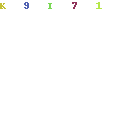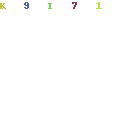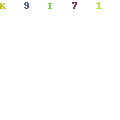On May 10, a 35-year-old bank loan agent in Mumbai suddenly developed a temperature. With the city firmly in the grip of the coronavirus pandemic, his family was alarmed but he dismissed their concern, saying he hadn’t come in contact with any confirmed Covid-19 patient. He ran to the local store in Vakola, and bought a strip of paracetamol. It didn’t help.
By morning, he was burning up and over the next two days, his condition slowly deteriorated. On May 13, his 38-year-old brother took him to VN Desai Hospital where an X-ray showed patches of pneumonia in his lungs that made the consulting doctor suspicious.
He was referred to Cooper Hospital, a designated Covid-19 hospital. “After standing in a line for two hours, I was informed that the line for the fever clinic is different. By that time, my brother had trouble breathing. So, I rushed him to a private nursing home,” said his brother.The nursing home refused to admit him without a swab test. So, he was taken to Hinduja Hospital for a test.
After three days on May 16, the report confirmed that he was a Covid-19 carrier. Worried, his brother called the Brihanmumbai Municipal Corporation’s (BMC) helpline number. At 6pm that day, two doctors came to the house. “The doctors informed me that at around 8pm, they will send an ambulance,” said the brother. “Finally after four hours of wait, at round 12.30am, the vehicle came,” he said.
But there was a new problem – the ambulance didn’t have oxygen support, critical for a patient with breathing problems.
By the time they reached Guru Nanak Hospital, four kms away, the patient’s oxygen levels dipped to dangerous levels. The hospital had no ICU beds available so the doctor referred him to Seven Hills Hospitals. They reached the hospital at 1.45am.
“Police stopped us at the gate and told us that there were no beds. Then they us asked to go to Nair hospital [in central Mumbai],” said the brother.
By now, he had travelled across five suburbs. Frantic, the brother dialed Nair Hospital, one of the largest facilities in Mumbai with 52 ICU beds, but was told there was none available. Four more hours were spent in the ambulance before a local politician helped the family get an ICU bed at the Jogeshwari Trauma Centre. The bed was available only after 9am.
“My brother’s back was paining and he couldn’t breathe, so I took him home. We rested for four hours, then went to Jogeshwari,” said the 38-year-old.
When they reached the hospital at 9am on May 18, they were informed that there were no vacant beds. At around 12pm, the patient was admitted to the ICU – a week after his symptoms had worsened.
That night, the hospital told the brother the patient had been put on a ventilator. “At 12.35am, the hospital informed me that my brother succumbed to his infection,” the brother said.
The harrowing experience of the Vakola family is not isolated.
On May 1, a family from Chembur visited five hospitals to get a 62-year-old woman admitted but couldn’t. A 38-year-old patient from Govandi could not find a bed for four days and was turned away from four government hospitals. His condition is now critical but he has not even been administered a swab test.
Much like New York was in March and April, Mumbai is now struggling to cope with the surge of Covid patients.
With 30, 542 cases and 988 fatalities, city hospitals are stretched to capacity, front-line staff are struggling to deal with physical, emotional and psychological trauma. Doctors are contracting the infection by the dozen, fights are breaking out in hospital queues and bodies of deceased patients are being left behind in wards for hours on end. The civic body has taken over private hospitals and is looking to turn buses and school vans into ambulances.
“Mumbai is on the verge of a health crisis,” said Dr Deepak Baid, president of Association of Medical Consultants. “The corporation should have made the arrangements earlier… Now, the helpline number has started giving a token number for the waiting list. They don’t even consider the patients who are critical.”
THE SHORTAGE
Hospital beds in Mumbai are divided into three categories: One, Covid Care Centres 1 and 2 (CCCs 1 and 2), the first for high-risk contacts of positive persons and the second for asymtomatic and mild patients. Two, Dedicated Covid Health Centres (DCHC) for symptomatic patients and moderately ill patients and some patients with co-morbidity; and, three, Dedicated Covid Hospitals (DCH) for patients showing prolonged symptoms, senior citizens, severely ill and critical patients. In all, there are 73,000 beds in Mumbai — 5500 DCH, 10,000 DCHC, 23,000 CCC1 (only for contacts), and 34,500 CCC2 beds.
Suresh Kakani, additional commissioner (health), BMC ,said the body has sufficient CCC, DCHC and DCH beds for Covid-19 patients. “It is true however, that there are limited number of ICU beds and these need to be used judiciously,” he admitted.
The Maharashtra government’s data says roughly 29% of the state’s patients need hospitalization. Daksha Shah, deputy health officer of the BMC, added that 20% of the patients require ICU care and 5%, ventilators.
In Mumbai, which has 21,297 active cases, this, on average, translates to roughly 6,100 patients needing hospitalization, 4,200 patients needing ICU beds and 1,060 requiring ventilators.
A separate calculation by the daily report of state medical education and drugs department pegged the percentage of patients requiring critical care at 5%. If this figure is extrapolated for Mumbai, it translates to around 1,000 patients.
But the BMC controls just 530 ICU beds, though the capacity has now gone up to 1,165 after the government on Friday took over 80% of beds in private hospitals in the city. Additionally, the city has 589 ventilators, and 2,255 beds with oxygen support systems. “This will be inadequate,” said a top state health department officer on condition of anonymity. He said according to the government’s calculations, almost 0.5% of Mumbai will be infected by the end of June, which translated to at least 100,000 infections. At the 5% ICU requirement calculation mentioned earlier, this translates to 5,000 ICU beds.
One big advantage Mumbai has over New York is that India has a much lower fatality rate than the US – 2.9% compared to 5.9%. But the city is grappling with rising panic and outdated technology.
Government procedure dictates that a patient is supposed to call the BMC helpline and get themselves registered, which is then allotted to the patient as soon as it is available.
The BMC helpline is fielding 4,000 calls daily – out of which 1,800 are for bed requests — but the lack of live dashboards means that helpline coordinators cannot guide patients on time. “By the time, we assign a bed to a caller, the bed gets booked by another critical patient,” said a volunteer on condition of anonymity.
In response, BMC officials said they have put in place a foolproof system.“We have appointed a doctor in the 1916 control room, who is supposed to gauge the need to allot an ICU bed after asking a set number of simple questions…Every co-morbid patient does not need an ICU bed. More patients need oxygen beds for assisted breathing. BMC’s facilities have sufficient oxygen beds,” said Kakani.
Officials also said they are developing a live dashboard in coordination with a private company that will be installed soon.
THE PANIC
According to the government, there are four main reasons for the shortage in critical care.
One, many patients and their relatives prefer major hospitals to peripheral hospitals. “While we have beds available in peripheral hospitals, we cannot force a patient to go there if he doesn’t want to. The hospitals everyone chooses are the ones that are over burdened,” said a senior civic body official.
Two, the stigma and panic around the infection prompt many families to not seek treatment on time. “They wait and watch for the symptoms to subside, but it only gets worse. Many patients come to hospitals at a much later stage of the infection, and then need critical healthcare,” said a second civic body official. Three, many patients insist that doctors put them on oxygen support even if their levels are normal. “Due to the anxiety and fear, they become breathless. Then they assume that their oxygen saturation is low,” said Dr Om Srivastava, an epidemiologist and part of the Covid task force.
Four, many officials feel private non-covid hospitals should not discharge a Covid-19 patient until a bed is found in a Covid hospital. “We coaxed private hospitals, offered them incentives, but it did not work. Hence we came up with the guidelines for 80% reservation of beds in all private hospitals, managed and distributed centrally by BMC,” said a third civic body official.
The BMC says it is preparing for an even bigger surge in cases. Sections of so-called jumbo facilities for asymptomatic patients in six locations are being converted into critical care units, with at least 10,000 beds added. At least 50% of these will have oxygen points as well and 10% beds will be reserved for virus patients who need dialysis.
The BMC is also revamping mini buses and school buses to make ambulances and hopes this will add 350 vehicles to its 250-strong fleet.
THE WARRIORS
The surge of the pandemic has hit hard thousands of medical staff at the forefront of the fight against the virus.
Interns, resident doctors, senior doctors, and nurses, all working in three shifts of eight hours each with personal protective equipment (PPE) as their only shield, are fighting a steep battle against not just the disease but also mental health concerns.
In Mumbai alone, 300 medical staff have contracted the infection. “We can’t start the air conditioning due to possible transmission of the virus. In this heat, we have to work in PPE for 6-8 hours without even drinking water. With precipitation and dehydration, our body starts aching. We feel dizzy,” said a doctor stationed in the isolation ward of St George Hospital.
Many woman nurses and doctors complain of urinary tract infection (UTI) due to the dehydration. The problem gets worse during menstruation. “With the PPE on, we can’t even go to the washroom,” said a nurse from Kasturba Gandhi Hospital.
All the medical staff on Covid duty are given alternative accommodation in hotels or lodges. Many haven’t seen their family for over two months.
“I have a 3-year-old daughter whom I have seen last in March. We do video chats everyday but I miss hugging her,” said Mahalaxmi Iyer, a nurse at Seven Hills Hospital, a resident of Vasai.
Source: https://www.hindustantimes.com/mumbai-news/covid-surge-pushes-mumbai-to-the-brink/story-qp2BGV2eRIaq09N5jqfOrO.html



